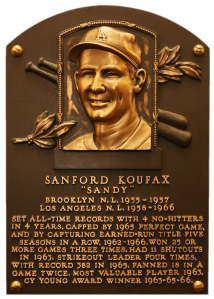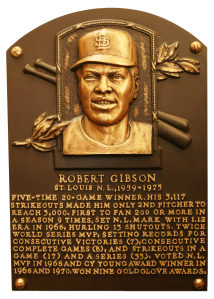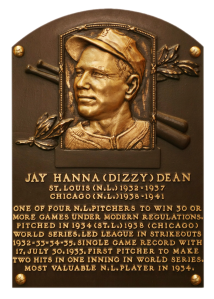
Year Inducted: 1972 (BBWAA, ballot #1, 344/396)
Score: 36130
Most “experts”, when talking about baseball players, suggest that a player’s prime years start around age 26 and last until, at the latest, 33. Usually, a player has peaked about 30 and can maintain that level or close to it for another few seasons before they really start to decline. So then, what does that say about a player who threw his final pitch at the age of 30 and ended his career with fewer innings than Pedro Martinez? How can such a pitcher even be inducted into the Hall of Fame? Because Sandy Koufax was the best pitcher during his generation, and the greatest left handed pitcher ever.








